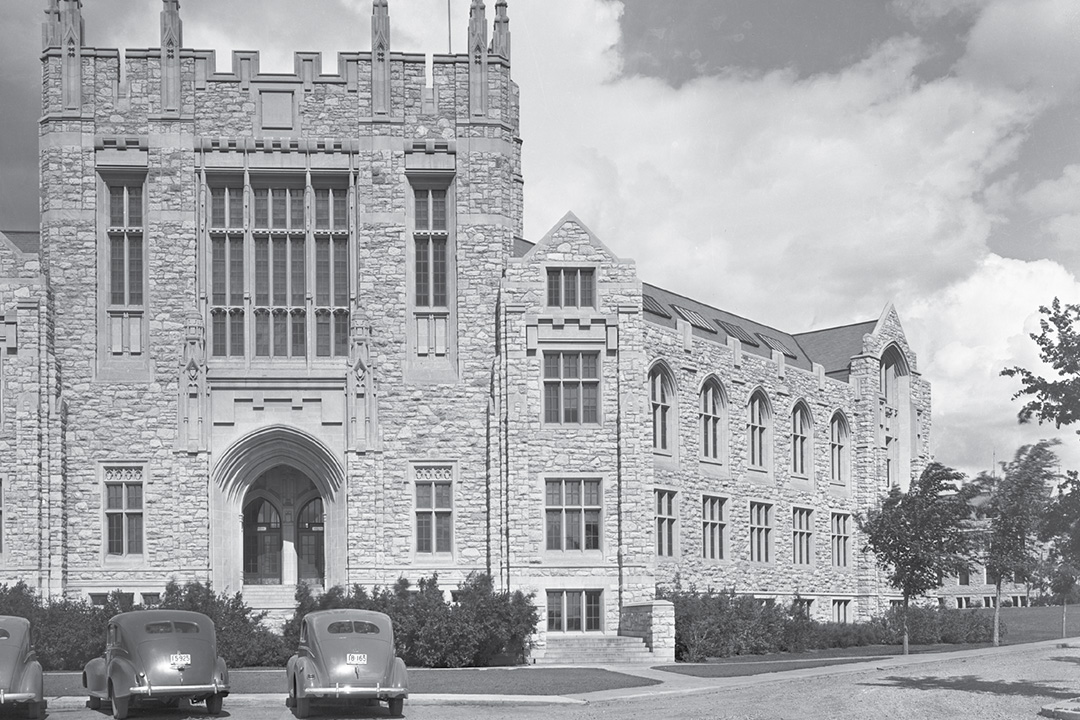
If these halls of learning could talk: The heritage buildings of USask
City archivist Jeff O’Brien delves into the notable heritage buildings on campus.
By Jeff O’Brien | Prairies NorthAsked to define what gives a building “heritage value,” most of us will probably start with the physical components: the essential details of form, design, style and construction. These are, literally, the building blocks of architectural heritage. But the reason we care about them is because of the stories they tell, about the people who created them and the ones that used them, all the way down to the present moment. Architectural heritage is only partly about buildings; mostly, it’s about people.
This is a story about the University of Saskatchewan: its history, its spaces and its people, and how they all connect within the wider communities that surround it. Some of this story is true and some is not. That’s how stories work.

Collegiate Gothic

The University campus was built in several stages, with the oldest buildings completed just before the First World War. Things slowed down considerably during the war itself, but picked up with a vengeance afterwards. By 1930, when the Depression brought everything to a shuddering halt, the U of S had fourteen buildings, most built in the Collegiate Gothic style, chosen because of its historical connection to the great campuses of Europe and because it was pretty. University President Walter Murray and others had toured a number of campuses looking for inspiration and been particularly enchanted with Washington University (in St. Louis, oddly enough) which became the inspiration for the original Campus Plan.
When we imagine the University of Saskatchewan, these are usually what we’re thinking of. Constructed mostly from greystone—a locally-sourced dolomitic limestone—they are beautiful and mediaeval-looking, festooned with arches and crenellations, buttresses and bay windows, with decorative carvings and other architectural knick-knacks too numerous to detail. They include the College Building (now the Peter MacKinnon Building) at the top of the Bowl, Thorvaldson (the erstwhile Chemistry Building); Qu’appelle Hall and Saskatchewan Hall, the President’s Residence, the Faculty Club and others.

